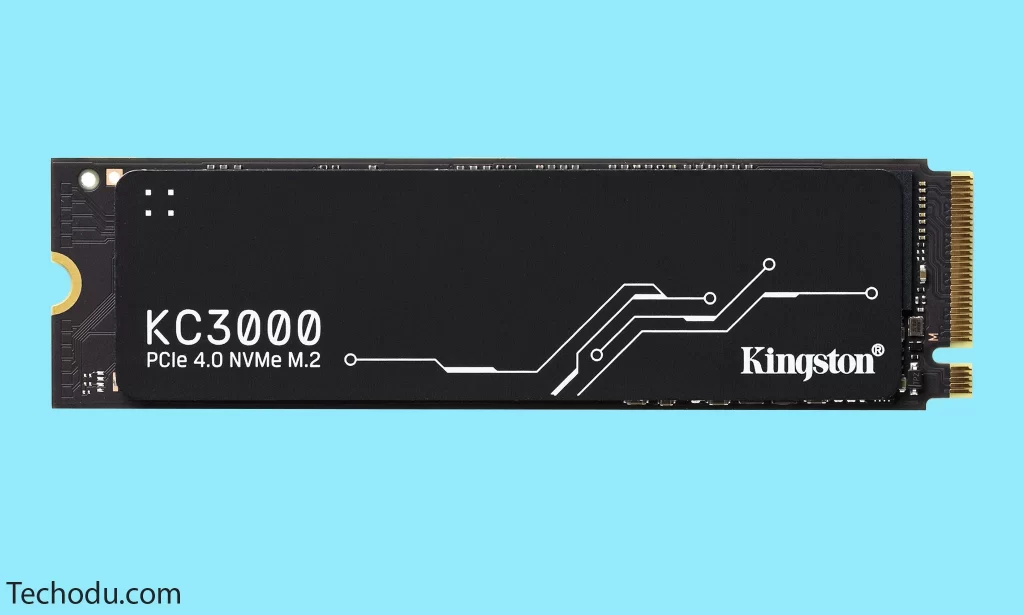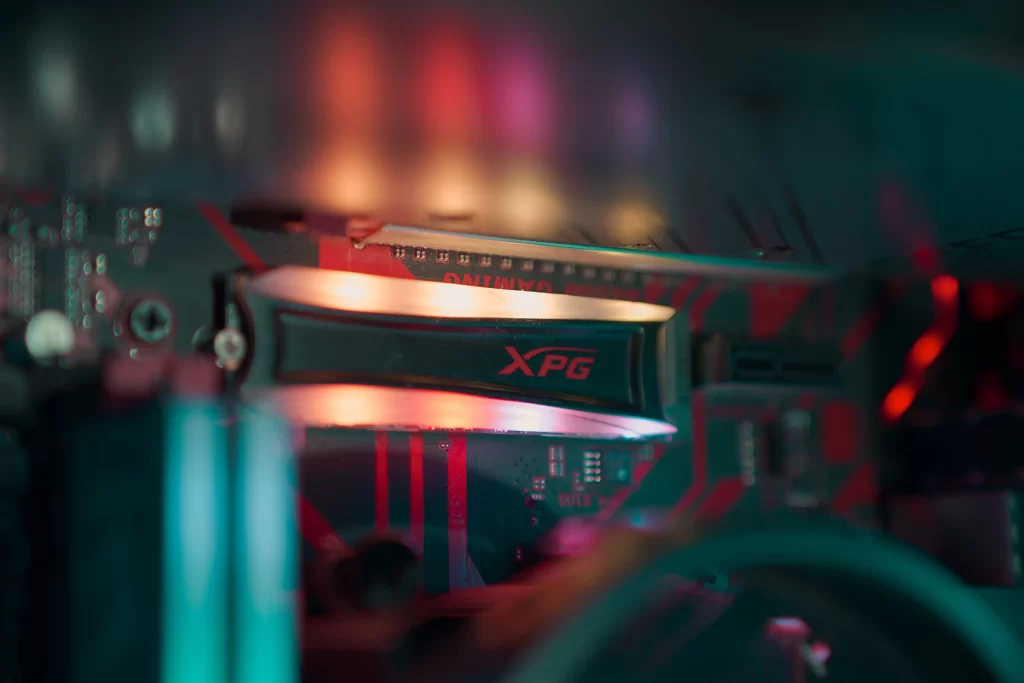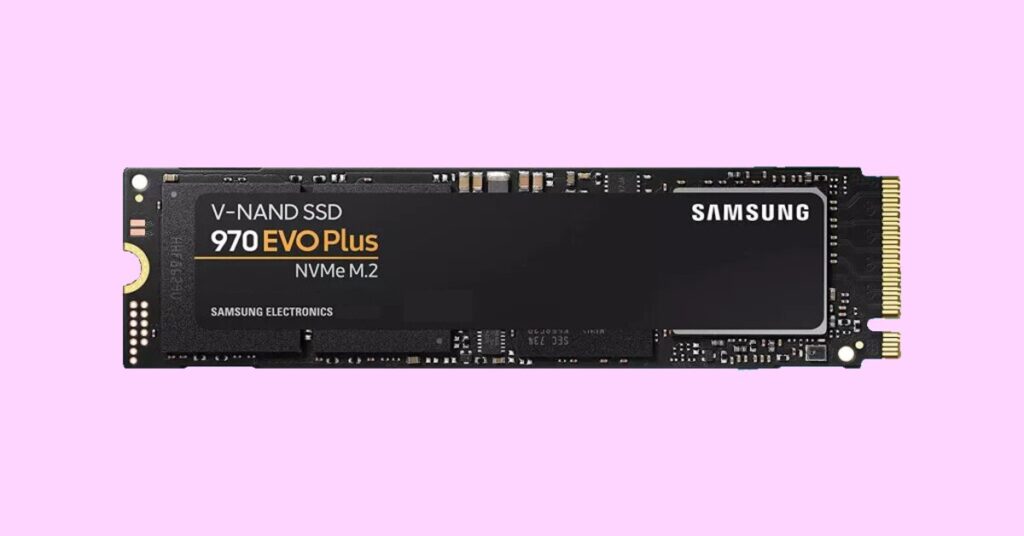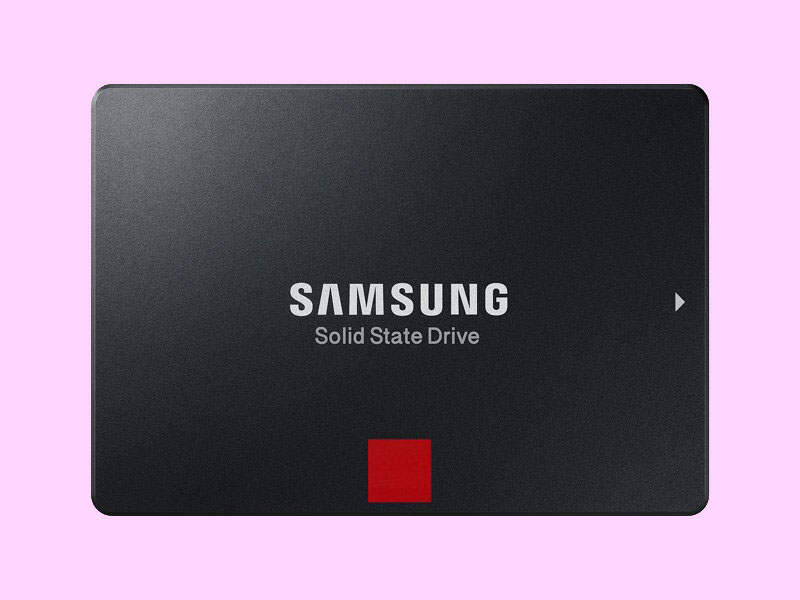If you want the best gaming PC or laptop, or just want a fast-producing machine, it’s important to find the best SSD (Solid State Drive) for your needs. A slow storage drive creates a big bottleneck, forcing your CPU processor to sit there shuffling its clock cycles, waiting for data. For faster reads and writes, you need a fast SSD. That’s why we test dozens of drives every year and highlight the best SSDs here.
Choose the best SSD for you
Since drives like Adata’s recent Falcon M.2, Intel 660p, and its successor, the Intel 665p, undercut mainstream drives on older, slower SATA interfaces, this could be the beginning of the end for our old friend Serial ATA. But companies are still doing new things with SATA, like Team Group’s massive 15.3 TB drives. The price of existing SATA drives must also continue to drop in order to compete at least on price, as they do not want to match the performance-wise of NVMe drives.
You’ve probably heard of the lightning-fast next-generation PCIe 4.0 M.2 SSDs from companies like Gigabyte, Corsair, Patriot, and more. These drives do increase sequential speeds significantly (due to doubling the PCIe bus bandwidth), making them the best SSD Solid State choice for those who need the fastest speeds. For example, the Samsung 980 PRO has read and write speeds of 7,000 and 5,000 MBps, respectively, while Phison’s upcoming second-gen controller promises 7,400/7000 MBps. However, to take advantage of today’s super-fast speeds, you’ll need an X570 motherboard or one of the newer B550 motherboards to run one of the drives at top speed.
Many new Intel Z490 motherboards also technically support PCIe 4.0. But to take advantage of the feature, you’ll have to wait for Intel to deliver its next-generation Rocket Lake CPUs for increased PCIe 4.0 speeds.
When choosing an SSD solid state drive, keep the following in mind:
Choose a compatible interface (M.2 PCIe, SATA, add-in cards): Check your user manual or a database like Crucial Memory Finder to determine what type of SSD your computer supports.
256GB to 512GB: Don’t worry about getting an SSD solid state drive smaller than 256GB. For most users, 512GB offers a good balance between price and capacity. But 1TB drives are getting cheaper, and 2TB drives are now affordable.
SATA is slowest: SATA isn’t as fast as M.2 PCIe or PCIe add-in cards, but most desktops and many laptops can use 2.5″ SATA drives, and many users doing typical mainstream tasks won’t notice anyhow, these days The difference between the SATA drives and the faster PCIe models.
Best SSD Recommendations:
1. Samsung 980 Pro

Capacity: 250GB, 500GB, 1TB, 2TB | Form factor: M.2 2280 single-sided | Transport interface/protocol: PCIe 4.0 x4 / NVMe 1.3c | Sequential read/write: 7,000 MBps / 5,000 MBps | Warranty/Endurance : Five years / up to 1,200 TBW
Features:
- Unmatched PCIe Gen4 Performance
- AES 256-bit encryption
- Black PCB
- 5-year warranty
- average endurance rating
- expensive
For those looking for the best option, the Samsung 980 PRO has it all. Samsung paired its in-house Elpis 8nm PCIe 4.0 x4 NVMe SSD controller with the company’s fastest V-NAND to unleash incredible performance.
The Samsung 980 Pro delivers up to 7/5 GBps of throughput and can sustain 1 million random read/write IOPS, making it the most responsive SSD solid state drive we’ve tested. This drive has all the features a high-end NVMe SSD might need, making it the ideal drive for those who want the best.
2. Kingston KC3000

Specification
- Capacity: 512GB, 1TB, 2TB, 4TB
- Form Factor: M.2 2280 Double-Sided
- Transmission interface/protocol: PCIe 4.0 x4 / NVMe 1.4
- Sequential read/write: 7,000 MBps / 7,000 MBps
- Warranty/Durability: Five years/up to 3,200 TBW
- Reason for purchase
- Fast PCIe 4.0 performance and cool operation
- attractive design
- 5 year warranty and high durability rating
- reasons to avoid
- expensive
- high power usage
- Lack of AES hardware encryption
If you’re looking for the fastest SSD on the market, Kingston’s KC3000 fits the bill, especially now that Intel has stopped making Optane products. The KC3000 is a high-performance PCIe 4.0 x4 NVMe SSD solid state drive that delivers up to 7 GBps read and write throughput and leading-edge speeds of up to 1 million IOPS.
Similar to the Seagate FireCuda 530 and Corsair MP600 Pro XT, the Kingston KC3000 is powered by a Phison PS5018-E18 paired with Micron’s 176-layer TLC flash memory. However, the KC3000’s flash speed of 1,600 MTps is faster than the MP600’s 1,200 MTps, giving it a tactical advantage.
The 2TB Kingston KC3000 outperforms the Samsung 980 Pro in durability and performance, but at the cost of efficiency. This means less battery life for laptop applications. The KC3000 is also not equipped with OPAL-compliant AES hardware encryption but instead comes in a double-sided form factor for higher capacity. That means the KC3000 might not be the best choice for your mobile device, but it’s a great SSD solid state drive for those building a high-end gaming desktop or workstation for productivity.
3. Western Digital Black Drive WD_Black SN850

Capacity: 250GB, 500GB, 1TB, 2TB | Form Factor: M.2 2280 single-sided | Transport Interface/Protocol: PCIe 4.0 x4 / NVMe 1.4 | Sequential Read/Write: 7,000 MBps / 5,300 MBps | Warranty/Endurance: 5 years / up to 1,200 TBW
Features:
- Competitive performance
- Large dynamic SLC cache
- black PCB
- 5 year warranty
- High idle power consumption on benchtop test bench
- AES 256-bit encryption is not supported
The Samsung 980 PRO wins the top pick for next-gen PCIe 4.0 x4 NVMe with its ultra-fast random performance, more consistent write profile, and higher efficiency, while WD’s Black SN850 is the top runner-up. Depending on the price, you can’t go wrong with a high-end gaming or workstation version. Western Digital’s Black SN850, combined with the company’s new 16nm WD Black G2 PCIe 4.0 x4 NVMe 1.4 SSD controller, marks a substantial improvement in the company’s SSD solid state drive architecture. Western Digital Black SN850 has the ability to maintain speeds up to 7/5.3 GBps and deliver very responsive random performance, making the SSD our top pick. Although, this comes at the cost of high idle power consumption on our benchtop test bench. Western Digital Black SN850 lacks AES 256-bit encryption.
M.2 PCIe NVMe drives
These little rectangular drives look like RAM, only smaller. They are usually 80mm long x 22mm wide and are described as size 2280, but some sizes may be shorter or longer, so make sure you get one that matches the slot. You can get SATA-capable M.2 drives, but most modern desktops and laptops with M.2 slots support the faster PCIe NVMe standard.
Best Value PCIe 4.0 M.2 SSD: Adata XPG Gammix S50 Lite
4. ADATA XPG Gammix S50 Lite

Capacity: 1TB, 2TB | Form Factor: M.2 2280 Duplex | Transport Interface/Protocol: PCIe 4.0 x4 / NVMe 1.4 | Sequential Read/Write: 3,900 MBps/3,200 MBps | Warranty/Endurance: 5 Years/Up to 1,480TBW
Features:
- show competition
- beautiful design
- affordable price
- Large dynamic write cache
- AES 256-bit full disk encryption
- 5 year warranty
- Out-of-cache writes are slow
Adata’s XPG SX8200 Pro has been the best value SSD in its class for quite some time, but Adata’s XPG Gammix S50 Lite has undoubtedly become one of the best value SSDs on the market. It’s not quite as fast as some of its PCIe Gen4 rivals, but it does beat many of the best PCIe Gen3 SSDs available, and it’s packed with features. Plus, it stays cool with stylish brushed aluminum heatsinks and has a higher durability rating than the Samsung 980 PRO.
Visit: Gaming Phone Specs
5. SK Hynix Gold P31
Best M.2 SSDs for Laptops
Capacity: 500GB, 1TB | Form Factor: M.2 2280 single-sided | Transport Interface/Protocol: PCIe 3.0 x4 / NVMe 1.3 | Sequential Read/Write: 3,500 MBps/3,200 MBps | Warranty/Endurance: 5 Years/Up to 750TBW
Features:
- top performance
- unprecedented efficiency
- AES 256-bit encryption
- Capacity up to 1TB
SK hynix’s Gold P31 took the lead in becoming the market leader, becoming the first retail SSD product released with 128L NAND flash memory. As SK hynix’s latest NAND achieves amazing bit density, Gold P31 hits the market at an extremely low price. Listed at $75 and $135 for 500GB and 1TB models, respectively, the Gold P31’s great value will make you think twice, costing $25 to $50 more on the Samsung 970 EVO Plus.
The Gold P31 from SK Hynix is ideal for those looking to increase the storage capacity of their laptop, not only to increase the capacity but also to extend the battery life. While Adata’s SX8200 Pro performs well against the Gold P31 in benchmarks, the SK Hynix is more power-efficient, which will result in longer charging times. But while the Adata is the best choice for desktops and the SK Hynix is the best choice for notebooks, the Gold P31’s strong write performance and super efficiency make it the best choice for many other users.
Laptop users who don’t need more than 1TB of storage and prioritize battery life should definitely put the new SK Hynix Gold P31 on their list of priorities.
6. Samsung 970 EVO Plus

Capacity: 250GB, 500GB, 1TB, 2TB | Form Factor: M.2 2280 single-sided | Transport Interface/Protocol: PCIe 3.0 x4 / NVMe 1.3 | Sequential Read/Write: 3,500 MBps / 3,200 MBps | Warranty/Endurance: 5 years / up to 1,200 TBW
Features:
- Overall solid performance
- black PCB
- excellent package
- Further efficiency optimizations can be used
We were impressed with the Samsung 970 EVO Plus. Like the Western Digital Black SN750, Samsung’s drive comes with the same controller as its predecessor. But instead of using the same flash, Samsung decided to make some changes with its new 9x-tier flash. Just as flash memory stacks to new heights, so does performance. The resulting drive lives up to its name: the Large Plus.
As the first retail SSD to market with Samsung’s latest 9x-tier flash memory, the Samsung 970 E
The VO Plus offers the same performance as the 970 EVO, plus more. The drive has consistently proven to have the strongest write performance on the market and can handle tough workloads. In some tests, it even beat Samsung’s own 970 PRO, which is quite a feat considering the PRO Plus is Samsung’s workhorse for workstation-class apps.
7. Team Group T-Force Cardea Zero Z340
Best Value M.2 SSD Alternatives
Capacity: 256GB, 512GB, 1TB Form factor: M.2 2280 single-sided | Transport interface/protocol: PCIe 3.0 x4 / NVMe 1.3 | Sequential read/write: 3,400 MBps / 3,000 MBps | Warranty/Endurance: 5 years/ Up to 1,665 TBW
Features:
- Competitive price, performance and efficiency
- 5-Year Warranty and Best-in-Class Durability Ratings
- The head spreader is very flexible
Team Group’s T-Force Cardea Zero Z340 SSD solid state drive isn’t more expensive than most entry-level M.2 SSDs. Still, thanks to the latest mainstream hardware, it’s a solid option for gamers looking to spend some money on their budget for a more consistent, reliable option.
The drive offers a solid option, and it’s a good option for those planning on their next PC. It’s a responsive solid-state drive that doesn’t just deliver multi-gigabyte performance; it has killer endurance ratings under its five-year warranty. Plus, it features smooth graphene and copper tabs that can handle heavy lifting without overheating, even when there is no airflow in the test system. If you want to use a heatsink on the M.2, the tabs won’t stop it like the heatsinks on some SSDs like Patriot’s Viper series.
In our examination, we found that the combination of the Phison E12S controller and Micron 96L flash performed fairly well. Notably, this drive offers faster performance than the older hardware powering the Seagate FireCuda 510, and it’s also more efficient. But it’s not the best.
8. Patriot Viper VPR100
The best RGB M.2 SSD
Capacity: 256GB, 512GB, 1TB, 2TB Form factor: M.2 2280 double-sided with heatsink | Transport Interface/Protocol: PCIe 3.0 x4 / NVMe 1.3 | Sequential Read/Write: 3,300 MBps / 2,900 MBps | Warranty/Endurance Sex: 5 years / 1600 TBW
Features:
- Stable performance and top-notch endurance
- Attractive RGB lighting and heatsink
- Capacity up to 2TB
- lowercase cache
- Certain lighting settings may affect performance
- No SSD toolbox or cloning software
When we first learned about the Viper VPR100, we were a little concerned about its performance. Not only is it less rated than most Phison E12-based SSDs, but the company says it will run slower at various RGB settings.
However, the drive showed no such issues on our ASRock X570 Taichi test bench when we ran it at various lighting settings. In fact, with default lighting enabled, it sometimes even outperformed the MyDigitalSSD BPX Pro by exceeding its rated specs.
The integrated heat shield not only greatly adds to the Viper VPR100’s aesthetics, but it also keeps the SSD solid state drive cool under any workload. The LEDs also didn’t add any noticeable heat output.
So no matter what your style is, you don’t have to worry about your choice. If you’re building a full RGB rig or just want to add some color to a new gaming system, the Viper VPR100 will definitely light up everything.
9. Sabrent Rocket Q
Best Large Capacity M.2 SSD
Capacity: 500GB, 1TB, 2TB, 4TB, 8TB | Form Factor: M.2 2280 double-sided | Transport Interface/Protocol: PCIe 3.0 x4 / NVMe 1.3 | Sequential Read/Write: 3,300 MBps / 2,900 MBps | Warranty/Endurance Sex: 5 years (after registration) / up to 1800 TBW
Features:
- Highest capacity M.2 SSD
- Competitive Performance and Efficiency
- software support
- Up to five years warranty
- expensive
- Slow write speed after write cache fills up
- Low persistence per GB compared to TLC
- Possibly throttling without cooling
Sabrent’s 8TB Rocket Q slot is the industry’s highest capacity M.2 NVMe SSD. This diminutive monster is obviously best for on-the-go data hoarders, but at $1,500, it will set you back to a decent gaming laptop. Not only does this drive increase the capacity of an ultra-thin M.2 SSD solid state drive to some of the highest we’ve ever seen; it also delivers outstanding performance and efficiency, thanks to the all-new Phison E12S controller and 96-layer QLC flash.
QLC flash does have its drawbacks such as lower endurance and slower write performance after the SLC write cache fills up during large file transfers, but the Phison E12S controller helps push the Rocket Q to what we see from QLC drives the fastest performance.
10. WD Blue SN570
The best DRAM-less M.2 SSD
Specification
- Capacity: 250GB, 500GB, 1TB
- Dimensions: M.2 2280 single-sided
- Transmission interface/protocol: PCIe 3.1 x4 / NVMe 1.3
- Sequential read/write: 3,500 MBps / 3,000 MBps
- Warranty/Durability: 5 years / up to 1,200 TBW
- Reason for purchase
- Competitive price and performance
- Single-sided PCBs in various capacities
- software support
- 5 years warranty
- reasons to avoid
- Small SLC cache and weak sustained write speed
WD’s Blue SN570 is a solid choice for mainstream builders putting together new systems and even gamers on a budget. Thanks to its BiCS5 TLC flash memory and improved NVMe SSD solid state drive controller design, the Blue SN570 delivers excellent performance in most consumer jobs.
This pairing resulted in a 40% improvement in sequential performance and solid gains in 4KB random read workloads, putting it on par with Samsung’s 980. However, at a lower price than the Samsung 980, and also offering a solid warranty, support software, and a decent endurance rating, the WD Blue SN570 is a better value.
SATA hard drive
You can use M.2 form factor SATA drives, but most SATA drives are 2.5-inch models so they fit into the same bays as laptop hard drives. SATA drives are the cheapest, but still the most popular.
11. Samsung 870 EVO
Best Consumer SATA SSD
Specification
- Capacity: 250GB, 500GB, 1TB, 2TB, 4TB
- Dimensions: 2.5″ 7mm
- Transmission interface/protocol: SATA 6Gbps / AHCI
- Sequential read/write: up to 560 MBps / 530 MBps
- Warranty/Durability: 5 years / up to 2,400 TBW
Reason for purchase
- Reliable and Responsive Architecture
- attractive aesthetics
- AES 256-bit encryption
- Capacity up to 4TB
- 5 years warranty
- software suite
- reasons to avoid
- Premium
Samsung Regularly shows us that it has the best SATA SSDs on the market. Following in the footsteps of its predecessors, the 870 EVO dominates with best-in-class performance, great power efficiency, and all the features you’d expect from a SATA SSD.
While not as durable as the PRO models, the 870 EVO offers enough durability for most users. Whether you’re a gamer or a prosumer, there’s up to 4TB of usable capacity to meet almost any need. You don’t need to look for a better SATA SSD – it’s your best choice.
12. Micron MX500
Best Consumer SATA SSD Alternatives
Capacity: 250GB, 500GB, 1TB, 2TB | Form Factor: 2.5″ 7mm | Transport Interface/Protocol: SATA 3/AHCI | Sequential Read/Write: Up to 560 MBps/510 MBps | Warranty/Endurance: 5 Years/ Up to 700 TBW
Features:
- mainstream performance
- competitive price
- Comes with SSD toolbox and cloning software
- Host power failure protection • Hardware AES-256 encryption
- TCG Opal 2.0 SED support
- The smaller capacity is slightly slower than the larger capacity
- Design can use a makeover
If you don’t want to shell out the big bucks for an NVMe-style product, but still want beefy SATA performance, the MX500 is a solid choice. A replacement for the Samsung 860 EVO, it offers similar performance and has a long history of reliability. Usually priced to sell, the MX500 is the best value for any capacity you need.
Named MX500, this M.2 SSD solid state hard drive is not far from 2.5-inch products. In addition to reading and writing speeds exceeding 500MB/s, it also has excellent durability and security, including integrated power-off protection. and other functions, even if there is a sudden power failure or a slight collision, the data will not be damaged. In addition, its extremely small size is also convenient for installation, which is a simple and convenient entry-level model for users who have not tried M.2 SSD.
However, because the SATA3.0 line is used, the file reading and writing speed is much slower than the PCIe Gen3 model, and not all motherboards support it. Therefore, It is recommended to confirm the plug-in of the home computer before purchasing. slot specifications to avoid incompatibilities.
13. Samsung 860 PRO

Capacity: 256GB, 512GB, 1TB, 2TB, 4TB | Form Factor: 2.5″ 7mm | Transport Interface/Protocol: SATA 3/AHCI | Sequential Read/Write: 560 MBps/530 MBps | Warranty/Endurance: 5 Years /Up to 4,800 TBW
Features:
- Highest SATA performance for sustained workloads
- high endurance
- consistent performance
- SSD toolbox and cloning software including TCG Opal, eDrive encryption support
- very expensive
Bound by the SATA interface, but still need the absolute maximum durability and performance? As the pinnacle of SATA performance, Samsung’s 860 PRO is an SSD worth buying.
Like the Samsung 970 PRO, the 860 PRO uses Samsung’s 64L MLC V-NAND, which helped propel it to the top of the charts in our benchmarks and delivered some incredible endurance figures. So you can get up to 4TB of capacity, while battery life can go up to 4,800 TBW. But the 860 PRO is three times the price of a typical mainstream SATA SSD, so it’s primarily aimed at businesses with deep pockets.
